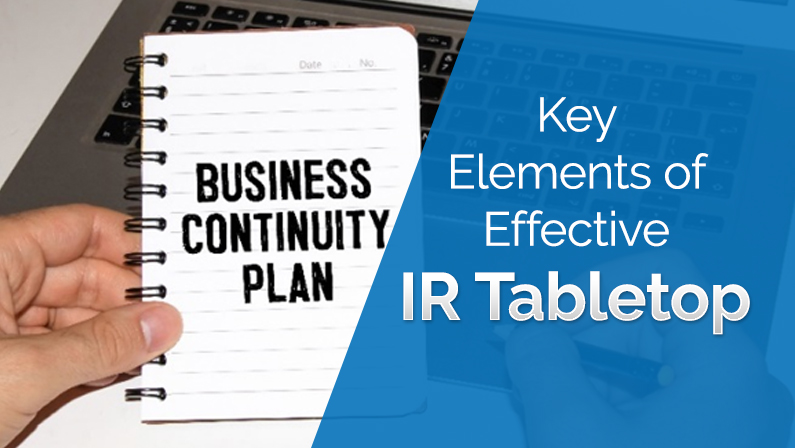Incident Response (IR) tabletop exercises are an integral component of the Business Continuity Planning process. They simulate adverse and cascading cybersecurity occurrences, enabling organizations to better operationalize their incident response planning process, by identifying areas in advance, which need improvement, without suffering undue real-world harsh consequences.
How to conduct an effective IR tabletop exercise:
- Describe the primary goals of the exercise:
- Communication processes and channels
- Identify decision-making procedures
- Document technical skills and resources
- Describe the Scope and Potential Scenarios to be Simulated:
- What incident is to be simulated: malware outbreak, data breach, insider threat, DDoS attack, etc.?
- Develop a realistic scenario of how concurrent events unfold, which are all respectively tagged to a common timeline. This scenario may be based on actual real-world incidents or perceived threats, relevant to the organization.
- Identify Participants:
- Recruit a mix of technical and non-technical personnel, including members from IT, security, legal, PR, accounting, finance, and senior leadership. This ensures a diversity of perspectives are baked in to the scenario.
- Appoint a facilitator, with scribe, to orchestrate and document the discussions and findings.
- Set the Ground Rules:
- Reassure participants that the exercise is a team learning opportunity, not a test or blame game.
- Create a safe space for candid and forthright communications, along with assuring confidentiality for all participants.
- Conduct the Exercise:
- Present the scenario, and once the chosen scenario is initiated, use frequent “injects”, which are new developments rapidly popping up, quickly advancing the storyline.
- Encourage participants to discuss their chosen actions, the why behind their decision-making, and the communication paths they use, according to their assigned roles.
- Capture Lessons Learned:
- At the end of the exercise debriefing session, dissect what went smoothly, identify unexpected obstacles, as well as viable ad hoc workarounds.
- Capture all observations, including areas requiring immediate attention, newly identified risks, along with operational gaps in the current IR plan.
- Report & Recommendations Documentation:
- Draft a report detailing the tabletop exercise’s findings, including the scenario, participants, key decisions made, challenges, and recommendations for improvement.
- Present this report to stakeholders and senior leadership for review.
- Update the Incident Response Plan:
- Based on the findings, revise the organization’s IR plan to address identified gaps and weaknesses.
- This might involve updates to procedures, enhanced training, or the introduction of new tools and technologies.
- Schedule out Table Top Exercises:
- Just as threats and technologies evolve, so must tabletop exercises.
- Regularly schedule these exercises, with varied scenarios, to ensure the organization remains prepared for different types of incidents.
- Feedback Loop:
- Encourage feedback from all participants, which will facilitate scoping of future tabletop exercises, ensuring their relevance, priority, and applicability.
Remember, the primary goal of a tabletop exercise is to improve the organization’s incident response capabilities. It provides a safe environment to test processes, decision-making, and communication without the stress and consequences of a real incident.





